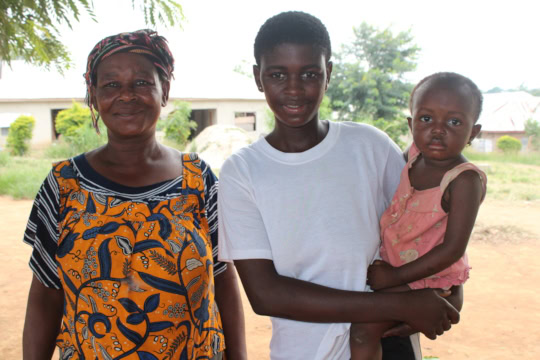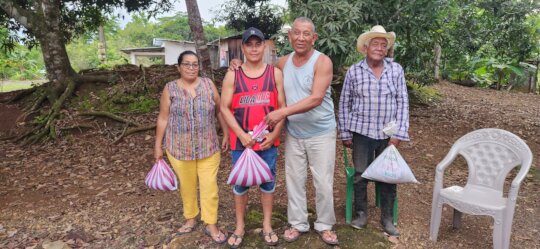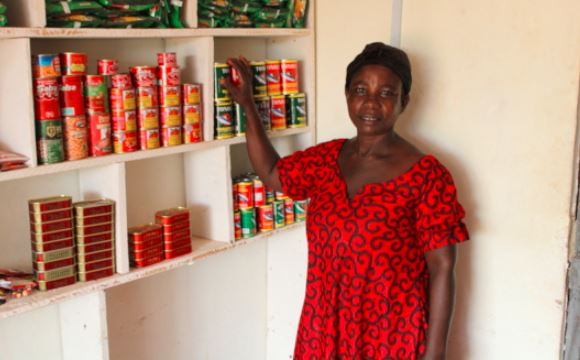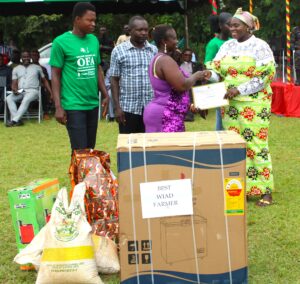A Field for a Classroom
By Beth Grabau – Development Officer, Central Iowa

Volunteers plant demonstration plots
For farmers, the field is the classroom. However, Nicaraguan farmers often have limited or no access to the knowledge and resources needed to increase yields. These factors make the Quality Protein Maize (QPM) demonstrations plots at the Fred Stohbehn Training Center so much more important. At the training center, farmers learn improved methods to increase yields, and how to dry and store grain to reduce post-harvest loss.
QPM has become an important source of protein, so learning how to maximize yields is critical. Many subsistence farm families cannot afford traditional sources of protein like meat, dairy, and eggs. Quality Protein Maize (QPM) produces higher yields, tastes better than other corn varieties and has 90% the digestible protein as skim milk. By planting and growing Quality Protein Maize (QPM) Nicaraguan farmers can provide better nutrition and additional income. QPM is used to feed the family, make tortillas to sell, and saved to plant next year, for a lasting improvement in both the family’s and communities nutritional intake and finances.
Volunteers recently visited the training center and helped the SHI staff plant the demonstration plot area located on the training center grounds. The planting was done, the same way the Nicaraguan farmers do it: by hand. Individual holes were dug after they were measured to ensure the kernels were spaced evenly. After the hole was dug, a seed was dropped in the hole, and then covered with the loose soil. Small individual plots were planted within demonstration area and marked for each variety of corn that was planted.
While planting by hand may seem basic, this method of planting in a straight row with event spacing is improving yields for farmers over the traditional method of simply scattering seed. The eldest volunteer in the group, Kelly, is an 83 year old farmer from southwest Iowa who reported that despite farming all his life, it was the first time he’d ever planted corn by hand. Volunteers gained a new appreciation for the labor intensive work the farmers engage in each growing season to produce enough food to feed their families, saying, “I’ve never been so hot or worked so hard!”
The plot included both quality protein maize and other non-QPM improved seed varieties. During the growing season, farmers will be able see and compare the different varieties of corn planted beside each other. As the growing season continues, the farmers will also be able to see first-hand the impact of applying different rates of fertilizer on the growing plant and the yields. The initial fertilizer application will be 15-15-15 (NPK) and later the SHI staff will apply 46% urea. A plot map is a record of each variety and fertilizer application. Farmers will easily be able to make comparisons when they visit the plots. This will help them determine which option will work best given their individual farming business.
Self-Help International will be able to continue to help hundreds of trainees with the educational programming and the demonstration area. The participants will be able to use their education to become self-sustaining, and see improvement in their quality of life.
Your donation has helped farmers learn how to improve the yields on their farms, which in turn improves their businesses by using the information learned at our training center. Thank you for your support.

Jorge and Keith start planting

Spacing out the holes to plant

Lifelong farmer, Kelly, plants with granddaughter

Keegan rids the field of rocks for easier planting

The demonstration plots are all planted!




